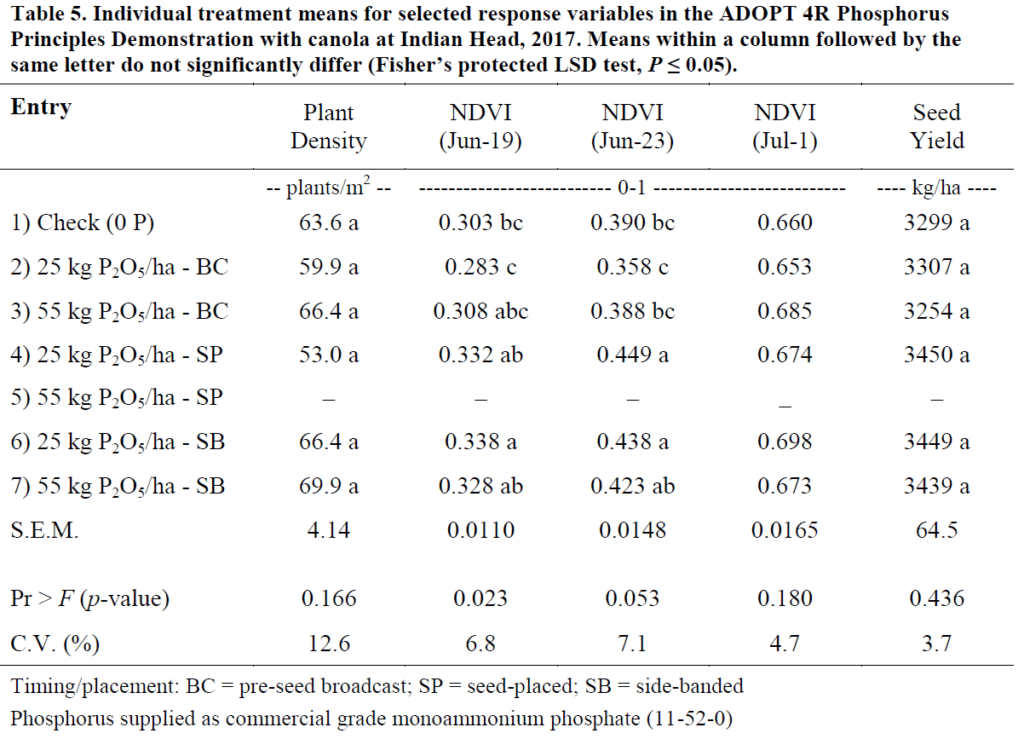Key Result
Results support the recommendation of banding or seed-placing phosphorus during the seeding operation as opposed to broadcasting.
Project Summary
A field trial with canola was conducted on a low phosphorus site near Indian Head, Saskatchewan in 2017 to demonstrate the response to contrasting rates (0, 25 or 50 kg P2O5/ha) and various timing/placement options (pre-seed broadcast, seed-placed or side-banded) for monoammonium phosphate fertilizer (11-52-0). An error during seeding resulted in the loss of the 55 kg P2O5/ha seed-placed phosphorus treatment. InVigor® L233P canola was seeded in early May, side-banded urea was balanced across treatments to supply 140 kg N/ha, and K2SO4 was broadcast prior to seeding to ensure that nutrients other than phosphorus were not limiting.

Overall it was a dry season with less than half the long-term average precipitation; however, initial soil moisture and yield potential were high. Seedling mortality was relatively high (~45%) under the dry conditions and emergence was somewhat variable but not affected by the treatments. This was not unexpected as the treatment most likely to impact emergence was the high rate of seed-placed phosphorus which was lost. Early-season assessments of vegetative growth using NDVI detected slight increases with side-banded phosphorus relative to broadcast phosphorus and the control but the differences were no longer evident by late bolting.
Results
The overall F-test for individual treatment effects on yield was not significant; however, across rates, yields with side-banded phosphorus were approximately 5% higher than those achieved with broadcast phosphorus or in the control. While the same comparisons could not be made due to the missing treatment, seed-placed phosphorus appeared to perform similarly to side-banded phosphorus with respect to both early season growth and yield. Yields were high despite the dry conditions, averaging 3366 kg/ha (60 bu/ac) across phosphorus treatments. The trial was toured on multiple occasions to over 300 people in total and discussed in detail at the annual IHARF/AAFC Indian Head Crop Management tour. Overall, these results support the recommendation of banding or seed-placing phosphorus during the seeding operation as opposed to broadcasting.
Funding acknowledgement
This project was supported by the Agricultural Demonstration of Practices and Technologies (ADOPT) initiative under the Canada-Saskatchewan Growing Forward 2 bilateral agreement.





